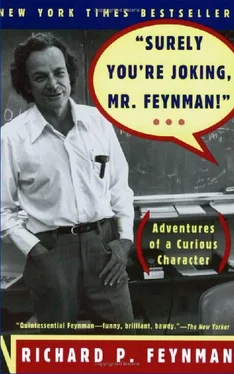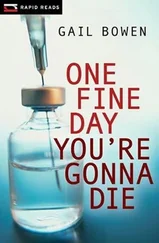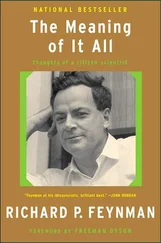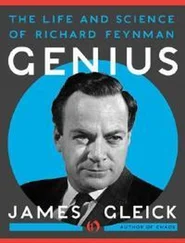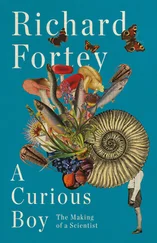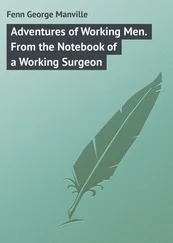It was like those moving pictures where you see a piece of equipment go bruuuuup, bruuuuup, bruuuuup. Every time I’d look up, the thing was getting bigger. What was happening, of course, was that all the boys had decided to work on this and to stop their research in science. All science stopped during the war except the little bit that was done at Los Alamos. And that was not much science; it was mostly engineering.
All the equipment from different research projects was being put together to make the new apparatus to do the experiment—to try to separate the isotopes of uranium. I stopped my own work for the same reason, though I did take a six-week vacation after a while and finished writing my thesis. And I did get my degree just before I got to Los Alamos—so I wasn’t quite as far down the scale as I led you to believe.
One of the first interesting experiences I had in this project at Princeton was meeting great men. I had never met very many great men before. But there was an evaluation committee that had to try to help us along, and help us ultimately decide which way we were going to separate the uranium. This committee had men like Compton and Tolman and Smyth and Urey and Rabi and Oppenheimer on it. I would sit in because I understood the theory of how our process of separating isotopes worked, and so they’d ask me questions and talk about it. In these discussions one man would make a point. Then Compton, for example, would explain a different point of view. He would say it should be this way, and he was perfectly right. Another guy would say, well, maybe, but there’s this other possibility we have to consider against it.
So everybody is disagreeing, all around the table. I am surprised and disturbed that Compton doesn’t repeat and emphasize his point. Finally at the end, Tolman, who’s the chairman, would say, “Well, having heard all these arguments, I guess it’s true that Compton’s argument is the best of all, and now we have to go ahead.”
It was such a shock to me to see that a committee of men could present a whole lot of ideas, each one thinking of a new facet, while remembering what the other fella said, so that, at the end, the decision is made as to which idea was the best—summing it all up—without having to say it three times. These were very great men indeed.
It was ultimately decided that this project was not to be the one they were going to use to separate uranium. We were told then that we were going to stop, because in Los Alamos, New Mexico, they would be starting the project that would actually make the bomb. We would all go out there to make it. There would be experiments that we would have to do, and theoretical work to do. I was in the theoretical work. All the rest of the fellas were in experimental work.
The question was—What to do now? Los Alamos wasn’t ready yet. Bob Wilson tried to make use of this time by among other things, sending me to Chicago to find out all that we could find out about the bomb and the problems. Then, in our laboratories, we could start to build equipment, counters of various kinds, and so on, that would be useful when we got to Los Alamos. So no time was wasted.
I was sent to Chicago with the instructions to go to each group, tell them I was going to work with them, and have them tell me about a problem in enough detail that I could actually sit down and start to work on it. As soon as I got that far, I was to go to another guy and ask for another problem. That way I would understand the details of everything.
It was a very good idea, but my conscience bothered me a little bit because they would all work so hard to explain things to me, and I’d go away without helping them. But I was very lucky. When one of the guys was explaining a problem, I said, “Why don’t you do it by differentiating under the integral sign?” In half an hour he had it solved, and they’d been working on it for three months. So, I did something, using my “different box of tools.” Then I came back from Chicago, and I described the situation—how much energy was released, what the bomb was going to be like, and so forth.
I remember a friend of mine who worked with me, Paul Olum, a mathematician, came up to me afterwards and said, “When they make a moving picture about this, they’ll have the guy coming back from Chicago to make his report to the Princeton men about the bomb. He’ll be wearing a suit and carrying a briefcase and so on—and here you’re in dirty shirtsleeves and just telling us all about it, in spite of its being such a serious and dramatic thing.”
There still seemed to be a delay and Wilson went to Los Alamos to find out what was holding things up. When he got there, he found that the construction company was working very hard and had finished the theater, and a few other buildings that they understood, but they hadn’t gotten instructions clear on how to build a laboratory—how many pipes for gas, how much for water. So Wilson simply stood around and decided, then and there, how much water, how much gas, and so on, and told them to start building the laboratories.
When he came back to us, we were all ready to go and we were getting impatient. So they all got together and decided we’d go out there anyway even though it wasn’t ready.
We were recruited, by the way by Oppenheimer and other people, and he was very patient. He paid attention to everybody’s problems. He worried about my wife, who had TB, and whether there would be a hospital out there, and everything. It was the first time I met him in such a personal way; he was a wonderful man.
We were told to be very careful—not to buy our train ticket in Princeton, for example, because Princeton was a very small station, and if everybody bought train tickets to Albuquerque, New Mexico, in Princeton, there would be some suspicions that something was up. And so everybody bought their tickets somewhere else, except me, because I figured if everybody bought their tickets somewhere else.
So when I went to the train station and said, “I want to go to Albuquerque, New Mexico,” the man says, “Oh, so all this stuff is for you! ” We had been shipping out crates full of counters for weeks and expecting that they didn’t notice the address was Albuquerque. So at least I explained why it was that we were shipping all those crates; I was going out to Albuquerque.
Well, when we arrived, the houses and dormitories and things like that were not ready. In fact, even the laboratories weren’t quite ready. We were pushing them by coming down ahead of time. So they just went crazy and rented ranch houses all around the neighborhood. We stayed at first in a ranch house and would drive in in the morning. The first morning I drove in was tremendously impressive. The beauty of the scenery, for a person from the East who didn’t travel much, was sensational. There are the great cliffs that you’ve probably seen in pictures. You’d come up from below and be very surprised to see this high mesa. The most impressive thing to me was that, as I was going up, I said that maybe there had been Indians living here, and the guy who was driving stopped the car and walked around the corner and pointed out some Indian caves that you could inspect. It was very exciting.
When I got to the site the first time, I saw there was a technical area that was supposed to have a fence around it ultimately but it was still open. Then there was supposed to be a town, and then a big fence further out, around the town. But they were still building, and my friend Paul Olum, who was my assistant, was standing at the gate with a clipboard, checking the trucks coming in and out and telling them which way to go to deliver the materials in different places.
When I went into the laboratory, I would meet men I had heard of by seeing their papers in the Physical Review and so on. I had never met them before. “This is John Williams,” they’d say. Then a guy stands up from a desk that is covered with blueprints, his sleeves all rolled up, and he’s calling out the windows, ordering trucks and things going in different directions with building material. In other words, the experimental physicists had nothing to do until their buildings and apparatus were ready, so they just built the buildings—or assisted in building the buildings.
Читать дальше
